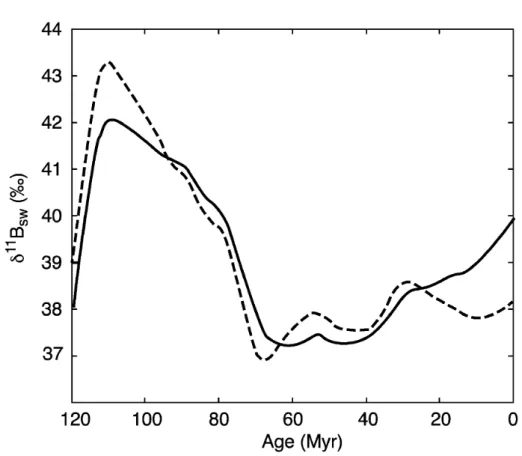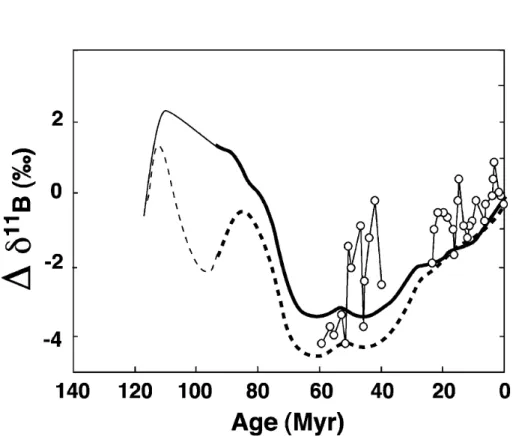Thomas Kuster 26. Februar 2007
1
1.1
Schwere Isotope sind bei Molek¨ ulen mit starren Bindungen angereichert. Je k¨ urzer die Bindungen desto steiffer die Bindung. Die Bindungen in Bors¨ aure sind k¨ urzer als die in Borat und somit auch starrer. 11 B welches schwerer ist als 10 B ist daher in Bors¨ aure angereichert.
1.2
Auf Grund der Aufgabe muss folgendes gelten:
∆B(OH) 3 · 0.82 + ∆B(OH) − 4 · 0.18 = ∆B Sample (1) (2) Definitionen der δ-Werte ergibt:
∆B Sample
R − 1
· 1000 = δB Sample (3)
∆B(OH) 3
R − 1
· 1000 = δB(OH) 3 (4)
R ·
δB(OH) 3 1000 + 1
= ∆B(OH) 3 (5)
R · δB(OH) − 4 1000 + 1
!
= ∆B(OH) − 5 (6)
Einsetzen der Gleichungen (5) und (6) in (1) und diese dann in (3) ergibt:
R δB(OH)
3
1000 + 1
0.82 + R δB(OH)
−4

